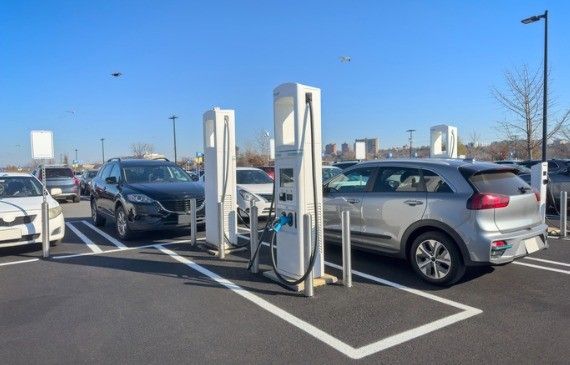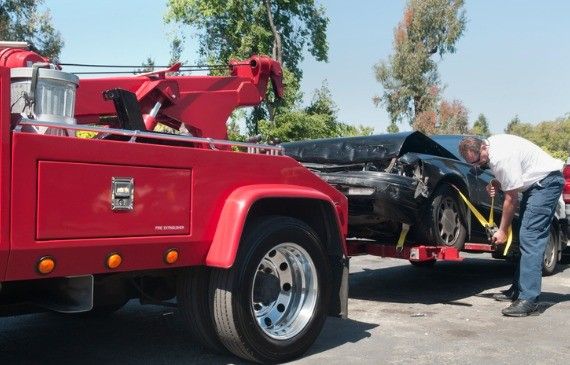Picture this: A world where vehicles glide along the streets with reduced emissions and increased fuel efficiency. It’s not just a vision – it’s the reality being shaped by the surge of alternative fuel vehicles (AFVs).
These incredible rides run on power sources like electricity, hydrogen, and hybrid systems, leading the charge in the automotive industry’s eco-conscious and innovative transformation.
In this article…
- Embracing Change: AFVs Take Center Stage
- The Importance of Specialized Training for Towing and Recovering AFVs
- Safety Protocols for Handling AFVs during Towing and Recovery Operations
- Special Equipment and Tools Required
- Taking Action: Getting Ready for the Challenge
Embracing Change: AFVs Take Center Stage
In an age where environmental concerns and technological advancements reign, AFVs have stormed onto the scene. These vehicles are on a mission to curb our carbon footprint, lessening our dependence on traditional fossil fuels.
With their diverse range of power sources, AFVs are revolutionizing the way we move, from bustling city streets to open highways.

Electricity, Hydrogen, and Hybrid Systems
AFVs are like a symphony of power sources, each playing its unique melody in the grand composition of sustainability.
Electric vehicles (EVs) hum with electric power, emitting zero tailpipe emissions and promising a cleaner urban experience. Hydrogen fuel cell vehicles harmoniously generate electricity from hydrogen, producing only water vapor as their “musical note” of emission. Meanwhile, hybrid systems blend conventional engines with electric motors, orchestrating an optimal balance between efficiency and power.
Paving the Way to Reduced Emissions and Improved Efficiency
One of the main stars of this green revolution is the reduced emissions that AFVs proudly flaunt. By minimizing harmful pollutants that choke the atmosphere, these vehicles contribute to cleaner air and a healthier environment. With advanced technologies under the hood, these vehicles make every drop of fuel count, stretching miles from a single gallon.
AFV Towing and Recoveries
The world of towing and recovery operations is also changing. These unique vehicles introduce a new set of challenges and considerations for those entrusted with the task of rescuing them from sticky situations.
The Importance of Specialized Training for Towing and Recovering AFVs
Tow truck drivers have long been the unsung heroes of roadways, providing essential services to drivers in need. With the rise of AFVs comes the need for specialized training to handle the unique challenges they present during towing and recovery operations.
Unlike conventional vehicles, AFVs often have intricate high-voltage systems, lightweight materials, and specific handling requirements that demand a different approach.
While towing and recovering conventional vehicles might be routine for experienced professionals, AFVs introduce a new dimension of complexity. Mishandling an electric vehicle’s battery of failing to properly disconnect a hydrogen fuel cell system can lead to serious safety hazards, both for the driver and the environment.
Hence, towing companies and drivers must adapt their skills to ensure safe, efficient, and damage-free operations involving AFVs.
Enter specialized tow trucks:
- Wheel-Lift Systems. Imagine these as the trusty companions for compact AFVs. Wheel-lift systems gently cradle the vehicle’s wheels, lifting it off the ground with care. It’s like giving the vehicle a supportive hand, ensuring a secure journey.
- Flatbed Towing Systems. For the larger AFVs, flatbed towing systems take the spotlight. These platforms offer a safe haven, transporting the vehicle without wear and tear. It’s like a cozy bed for the journey ahead.
- The Power of Adaption. But it’s not just about equipment – it’s about adaptability. Towing companies and drivers must be ready to swiftly adapt their skills and approach for each AFV’s unique quirks.
Safety Protocols for Handling AFVs during Towing and Recovery Operations
When it comes to towing and recovering AFVs, safety should always be the top priority. Specialized training emphasizes safety protocols tailored to the unique characteristics of AFVs.
- Properly isolating high-voltage systems
- Disabling airbags
- Securing loose components
- Following specific shutdown procedures
These protocols are just a few critical steps from initial assessment to final recovery, ensuring the protection of both the tow truck driver and the environment.
Special Equipment and Tools Required for Safe Towing and Recovery of AFVs
Towing and recovering AFVs requires more than just the standard tow truck gear. These vehicles come from their own set of quirks and complexities, demanding specialized equipment to ensure safe and successful operations.
- Insulated gloves. Think of these gloves as a shield against electrical hazards. AFVs, especially electrical vehicles, pack a high-voltage punch. Insulated gloves are designed to protect tow truck drivers from accidental shocks when working with components like batteries and charging systems. Slip on a pair of these gloves, and you’ve got an added layer of safety between you and the high-voltage elements.
- High-voltage cable cutters. Cutting a cable might sound simple, but when it comes to AFVs, it’s a different ballgame. High-voltage cable cutters are specially designed to snip through wires without causing electrical sparks or hazards. These cutters are a must-have for situations where cables need to be disconnected safely during recovery.
- Grounding mats. Image this as a safety carpet for AFVs. Grounding mats help dissipate electrical charges from the vehicle to the ground, reducing the risks of shocks to the driver and preventing electrical damage. Placing a grounding mat under the AFV before recovery is like creating a safe zone for both you and the vehicle.
- Appropriate towing attachments. AFVS can have unconventional body shapes or lightweight structures. This is where the right towing attachments come in. Hooking up a vehicle for towing requires precision, and using attachments designed specifically for AFVs ensures a secure connection without causing damage.
- Wheel-lift and flatbed towing systems. Different AFVs call for different towing approaches. Wheel-lift systems are ideal for compact AFVs, lifting the front or rear wheel off the ground for a stable tow. Flatbed towing systems, on the other hand, are perfect for larger AFVs, providing a completely flat surface to securely transport the vehicle without any wear and tear on its components.
- Fire suppression systems and spill containment materials. Safety isn’t just about protecting yourself. It’s also about safeguarding the environment. AFVs can pose fire risks, especially in emergency situations. Having fire suppression systems and spill containment materials on hand helps tow truck drivers tackle potential hazards swiftly and effectively, minimizing damage and keeping everyone safe.
Taking Action: Getting Ready for the Challenge
When it comes to AFV towing and recovery, being proactive is key. We're shining a light on two crucial players: wheel lift systems and flatbed towing systems.

These are the tow trucks designed to handle the unique demands of AFVs. Think of wheel lift systems as a gentle hand for smaller AFVs, ensuring a smooth lift. For the bigger ones, flatbed towing systems provide a cozy, secure space for the journey ahead.
Stepping Forward with Beacon Funding
Now, I know investing in these specialized tow trucks might sound like a big task. But here's the good news – Beacon Funding is here to help. We've got tailor-made tow truck financing solutions, making it easier for towing companies to get the right equipment. Imagine your fleet all set up, ready to tackle the challenges of AFV towing and recovery like pros.
Ready to Rise to the Challenge?
So, are you up for it? Reach out to Beacon Funding today and start your journey towards mastering AFV towing and recovery. Get your fleet equipped with the tools you need and become the true heroes of the road. The future's looking electric – and it's up to you to shape it.